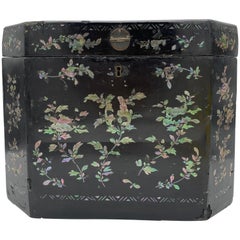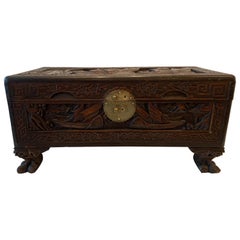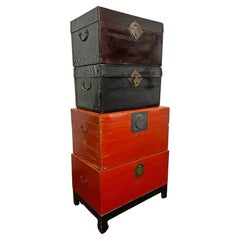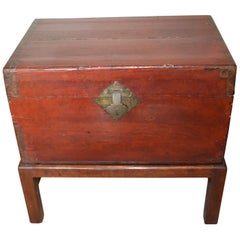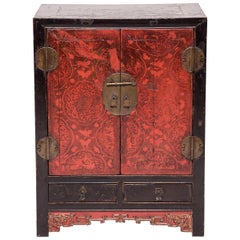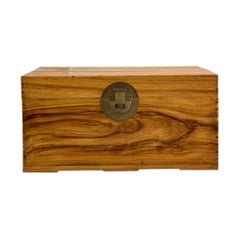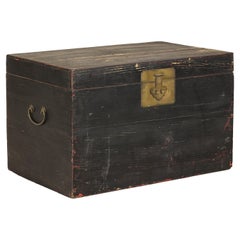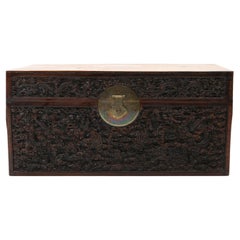Antique Chinese Chest
Late 19th Century Chinese Qing Antique Chinese Chest
Lacquer
Early 20th Century Chinese Chinese Export Antique Chinese Chest
Hardwood
Late 19th Century Chinese Chinese Export Antique Chinese Chest
Leather, Wood, Lacquer
19th Century Chinese Chinoiserie Antique Chinese Chest
Wood
Mid-19th Century Chinese Qing Antique Chinese Chest
Brass
Early 20th Century Chinese Chinese Export Antique Chinese Chest
Brass
Early 20th Century Chinese Qing Antique Chinese Chest
Brass
Mid-19th Century Chinese Qing Antique Chinese Chest
Hardwood
Late 19th Century Chinese Chinese Export Antique Chinese Chest
Wood
Mid-19th Century Chinese Chinese Export Antique Chinese Chest
Gold Leaf
1840s Antique Chinese Chest
Teak
19th Century Chinese Chinese Export Antique Chinese Chest
Wood
Late 18th Century Chinese Qing Antique Chinese Chest
Metal
Early 20th Century Chinese Antique Chinese Chest
Metal
1920s Chinese Antique Chinese Chest
Hardwood
Late 19th Century Chinese Campaign Antique Chinese Chest
Aluminum, Steel
19th Century Chinese Qing Antique Chinese Chest
Metal, Brass
Late 19th Century Chinese Chinese Export Antique Chinese Chest
Brass
19th Century Chinese Antique Chinese Chest
Wood
Early 20th Century Antique Chinese Chest
Hardwood
1820s Chinese Campaign Antique Chinese Chest
Hardwood
Early 20th Century Chinese Antique Chinese Chest
Brass
Early 20th Century Chinese Antique Chinese Chest
Brass
Early 20th Century Chinese Antique Chinese Chest
Wood
Early 20th Century Chinese Antique Chinese Chest
Elm
Early 20th Century Chinese Antique Chinese Chest
Elm
Late 19th Century Chinese Qing Antique Chinese Chest
Brass
19th Century Chinese Qing Antique Chinese Chest
Iron
Late 19th Century Chinese Chinese Export Antique Chinese Chest
Brass
1850s Chinese Campaign Antique Chinese Chest
Brass
19th Century Chinese Antique Chinese Chest
Rattan, Wood
18th Century Antique Chinese Chest
Wood
Early 20th Century Chinese Antique Chinese Chest
Bronze
1890s Chinese Chinese Export Antique Chinese Chest
Wood
Mid-19th Century Chinese Tang Antique Chinese Chest
Brass
1880s Chinese Campaign Antique Chinese Chest
Brass
19th Century Antique Chinese Chest
Brass
Late 19th Century Asian Antique Chinese Chest
Wood
19th Century Chinese Chinese Export Antique Chinese Chest
Wood
1890s Chinese Antique Chinese Chest
Brass
19th Century European Chinoiserie Antique Chinese Chest
Marble
Late 19th Century Chinese Antique Chinese Chest
Brass
19th Century Chinese Antique Chinese Chest
Iron
18th Century Chinese Qing Antique Chinese Chest
Iron
Late 19th Century Chinese Antique Chinese Chest
Iron
19th Century Chinese Qing Antique Chinese Chest
Brass
Early 20th Century Chinese Chinese Export Antique Chinese Chest
Bronze
Early 20th Century Chinese Qing Antique Chinese Chest
Metal
1790s Chinese Antique Chinese Chest
Late 18th Century Chinese Qing Antique Chinese Chest
Wood
Early 20th Century Chinese Antique Chinese Chest
Brass
Mid-19th Century Chinese Chinese Export Antique Chinese Chest
Brass
Early 20th Century Chinese Antique Chinese Chest
Brass
Mid-19th Century Chinese Chinese Export Antique Chinese Chest
Brass
Early 20th Century Chinese Qing Antique Chinese Chest
Brass
19th Century Chinese Qing Antique Chinese Chest
Metal
19th Century Chinese Qing Antique Chinese Chest
Iron
19th Century Chinese Federal Antique Chinese Chest
Brass
Early 20th Century Chinese Antique Chinese Chest
Brass
Early 1900s Chinese Qing Antique Chinese Chest
Wood
- 1
- ...
Antique Chinese Chest For Sale on 1stDibs
How Much is a Antique Chinese Chest?
- 1stDibs ExpertSeptember 9, 2024To tell if a chest is antique, first examine its materials and details carefully. An antique chest is one produced 100 years ago or more. This generally predates the use of engineered wood, particleboard, plastics and other synthetic materials. As a result, an antique chest usually features solid wood construction.
In addition, antique chests are likely to be handmade, so you should be able to spot subtle signs that indicate this, such as tool marks and small irregularities in any carvings. If a piece looks flawless and regular, it is unlikely to be antique. Locating a maker's mark and then researching when the manufacturer was active can also help you date your chest. Alternatively, you can use the services of a certified appraiser or knowledgeable antique dealer to learn more about your chest.
On 1stDibs, shop a large selection of antique chests. - 1stDibs ExpertNovember 4, 2024To identify an antique chest of drawers, look inside and beneath drawers and on the back and bottom for any type of maker's marking. Researching these marks using trusted online resources may allow you to determine who produced your chest and roughly date your piece. If your chest is at least 100 years old, it is an antique. Should you be unable to locate the maker's marks, look at the hardware. Rose head nails, one-piece cast brass pommels on the drawer handles and circular rather than hexagonal bolts may all indicate that a piece is an antique. Keep in mind that hardware may have been replaced at some point and that there are many reproductions of antique furnishings. As a result, you may wish to have a certified appraiser or experienced antique dealer complete the identification process if you're unable to identify your chest via the maker's markings. Find a range of antique chests of drawers on 1stDibs.
 PAGODA REDOctober 7, 2020
PAGODA REDOctober 7, 2020To determine the age of a Chinese furniture piece, look carefully at the joinery and finish. Natural expansion and contraction of the wood over time will cause a joint to protrude or retract, distorting a once-seamless fit. Antique lacquer finishes become crackled and worn over time. Areas of exposed wood, such as the underside of a table, the footrest of a chair, or the back of a cabinet should appear raw and dry compared to the finished surface. With use, the legs of tables and chairs become weathered near the bottom from precipitation and use.
 Lotus GallerySeptember 23, 2020
Lotus GallerySeptember 23, 2020The best way to know is to take it to an expert, such as an appraiser, reputable dealer or auction house, or museum
- 1stDibs ExpertNovember 4, 2024To identify antique Chinese furniture, look carefully at its details. Chinese craftsmen often built furniture using mortise and tenon joinery, eliminating the need for nails and screws. If you see this type of hardware, your piece is likely not at least 100 years old, especially if the hardware still looks new and shiny. Since antique furniture was handmade, you will normally see slight imperfections, such as tool marks or slight variations in carvings. Pieces that appear completely uniform and pristine are less often genuine antiques.
When present, maker's marks can also be helpful. Research the marks to learn more about when the maker was active and producing pieces like yours. Alternatively, you can have a certified appraiser or experienced antique dealer evaluate your furniture for you.
Shop an assortment of antique Chinese furniture.
